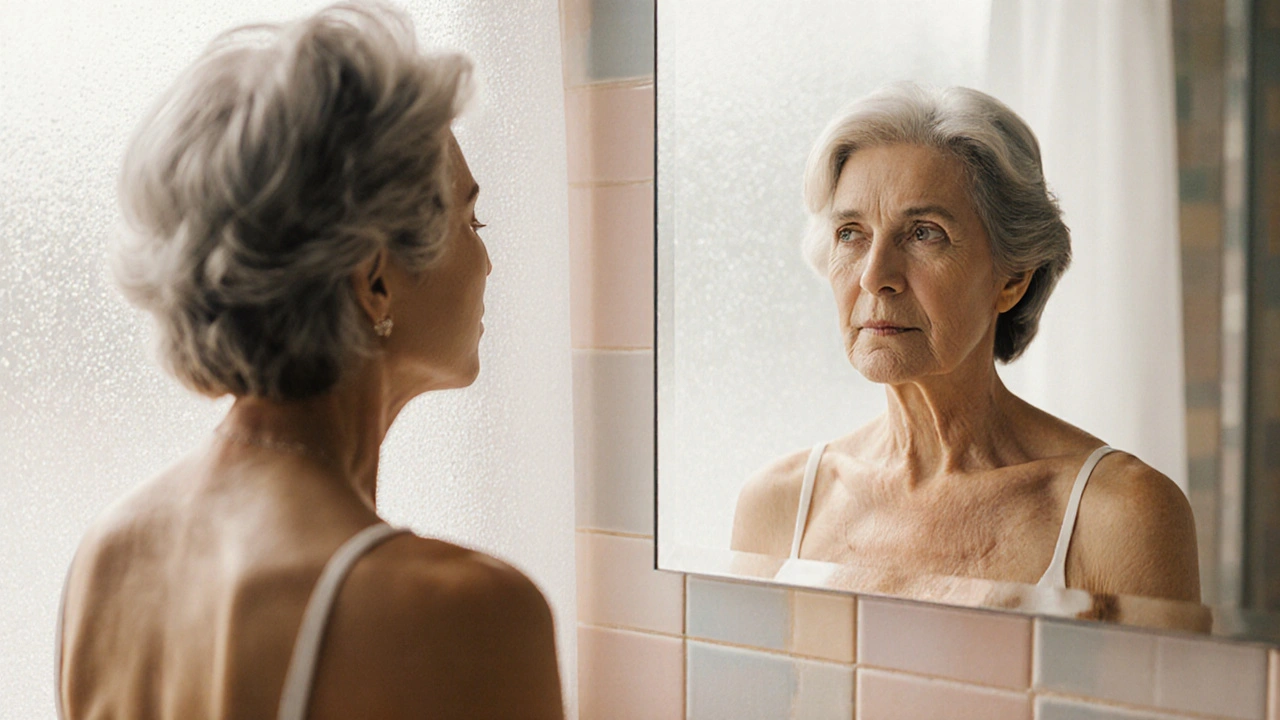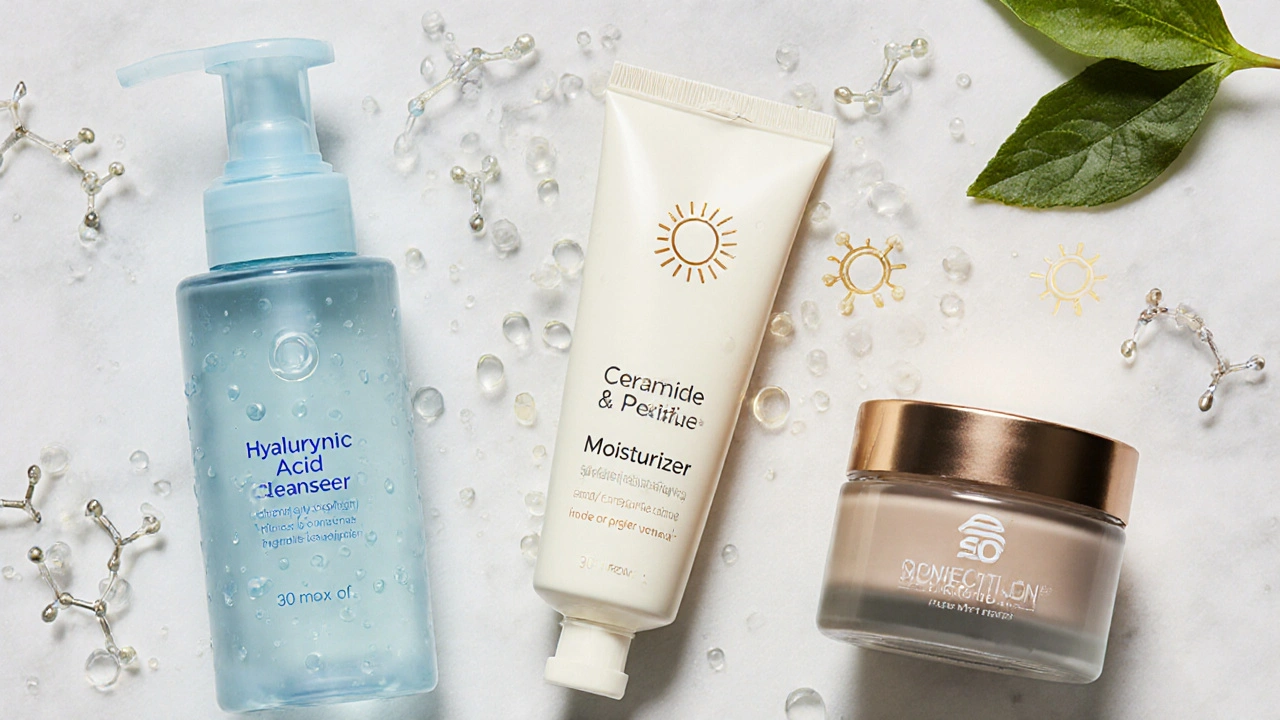
When Menopause begins, hormone shifts ripple through every part of the body, the skin is often the first place people notice the change. Skin is the body’s outer barrier and a visual indicator of internal health loses elasticity, dries out, and may develop fine lines faster than before. Understanding why these changes happen and what practical steps you can take will let you keep that fresh, radiant look well into the next decade.
During the reproductive years, estrogen helps the skin stay plump by stimulating Collagen the structural protein that gives skin its firmness. As menopause approaches, estrogen levels can drop up to 80%, and three key skin‑related processes feel the impact:
These physiological shifts explain why many women notice a dull complexion, sagging jawline, or increased sensitivity right around the 45‑55 age window.
Think of your routine as a three‑step shield: cleanse, hydrate, protect. Each step should use ingredients that counteract the hormonal loss described above.
Skip harsh foaming bars that strip the skin’s natural oils. Opt for a sulfate‑free, pH‑balanced cleanser that contains Hyaluronic Acid a humectant that draws water into the epidermis. This keeps the skin hydrated even after rinsing.
Look for ceramide or peptide blends. Ceramides restore the lipid matrix, while peptides signal cells to produce more collagen. A good rule of thumb: the cream should melt into the skin within 30 seconds and leave a subtle, non‑sticky finish.
UV radiation accelerates collagen breakdown. Use a broad‑spectrum sunscreen with SPF30 or higher every morning, regardless of cloud cover. Mineral options (zinc oxide, titanium dioxide) are less likely to irritate dry, sensitive skin.

Skincare products work best when your internal environment supports them. Here are evidence‑backed habits:
If you notice any of the following, it’s time to schedule a professional appointment:
A dermatologist can run a skin‑type analysis, suggest targeted prescription serums, or discuss hormone‑balancing options that might complement your topical routine.

| Ingredient | Key Benefit | How It Works | Typical Concentration |
|---|---|---|---|
| Hyaluronic Acid | Intense hydration | Draws up to 1,000× its weight in water, plumping the dermis | 0.5‑2% |
| Retinol (or Bakuchiol) | Collagen stimulation, wrinkle reduction | Promotes cell turnover and boosts fibroblast activity | 0.3‑1% |
| Peptides (Copper, Argireline) | Firmness, reduced sagging | Signal skin cells to produce new collagen and elastin | 2‑5% |
| Vitamin C (L‑Ascorbic Acid) | Brightening, antioxidant protection | Neutralizes free radicals and inhibits melanin formation | 10‑20% |
| Niacinamide | Barrier repair, even tone | Boosts ceramide production and reduces inflammation | 4‑10% |
Estrogen helps the skin retain moisture by supporting natural lipids. When estrogen drops, the skin barrier loses those lipids, making it harder to keep water in. A hyaluronic‑acid‑rich moisturizer can fill that gap.
Some studies show low‑dose estrogen can modestly increase collagen density and improve hydration. However, HRT isn’t right for everyone; discuss risks and benefits with your doctor before starting.
Retinol can cause irritation if you’re not used to it. Start with a low concentration (0.3mg/ml) once or twice a week, pair it with a barrier‑repair moisturizer, and gradually increase frequency. Bakuchiol offers a gentler botanical alternative.
A night cream that combines ceramides, peptides, and a low‑dose retinoid can boost repair while you sleep. If your daytime moisturizer already contains these, a simple hydrating mask may be enough.
Consistent sunscreen use, nightly hydration, a diet rich in omega‑3s and antioxidants, and regular low‑impact exercise together preserve collagen and keep the skin barrier strong. Small habits add up fast.
Write a comment